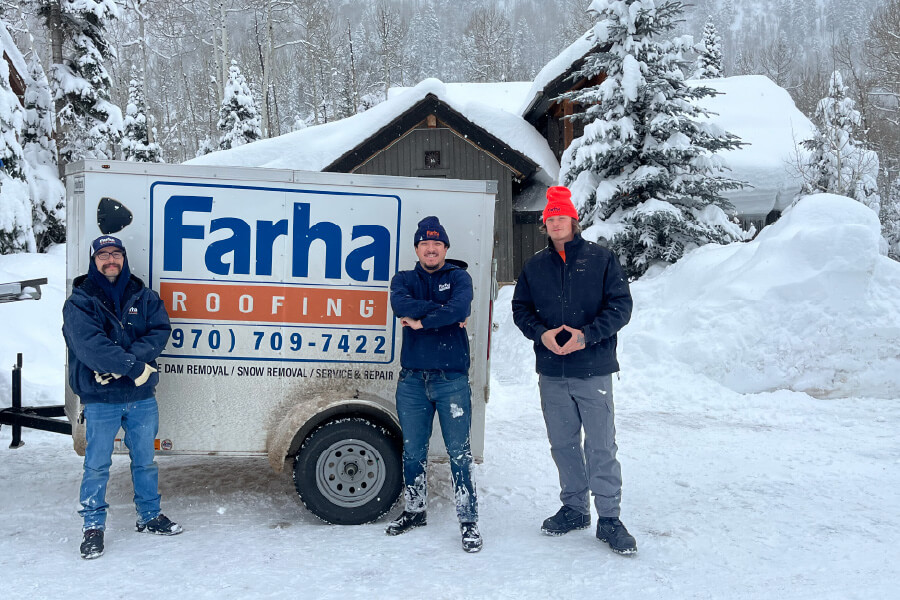Winter storms often create picturesque blankets of snow, but the snow piled on your roof is heavier than you think, and it can put stress on the structure of your roof, causing potential danger to your property and its occupants. When left untreated, excessive snow can lead to ice dams, leaks, structural damage, or even roof collapse in extreme cases.
It’s recommended to remove large amounts of snow from your roof if temperatures and sun exposure are not melting it quickly enough. But before you grab a ladder and head outside, it’s important to understand how to remove snow safely, and when to call in the professionals.
Here are our tips to protect your roof (and yourself) this winter.
1. Know When Snow Removal Is Necessary
You should take action when:
- Snow depth exceeds 6–12 inches, especially when it’s wet, heavy snow
- Ice dams are forming along the eaves
- Doors or windows begin sticking (this can be a sign of structural stress)
- You notice sagging ceilings or creaking noises
When in doubt, it’s always safest to consult a roofing professional.
2. Use the Right Tools, Never Improvised Ones
Avoid shovels, metal tools, or anything that could scrape or puncture roofing materials. We recommend using a roof rake with a long, telescoping handle. In addition to protecting your roof, this tool will also allow you to remove snow from the ground for some properties, minimising your risk.
3. Don’t Remove All the Snow, Just Reduce the Load
Trying to scrape the roof completely clean can damage shingles, flashing, and gutters. Your goal is weight reduction, not perfection.
The best thing to do is:
- Remove the top layer of heavy snow
- Leave a thin 1–2 inch layer to protect roofing materials
- Focus on problem areas like valleys, eaves, and flat sections
4. Be Careful Around Ice Dams
Ice dams, which are frozen ridges along the roof edge, should not be broken or chipped away. This often causes more damage than the ice itself. For a safer approach, remove the snow behind the ice dam, and allow heat from inside the home to gradually melt it. If the ice dam is severe, professional removal is the safest option.
5. Watch for Hidden Hazards
When the snow is deep, many tripping hazards are concealed, including:
- Skylights
- Roof vents
- Satellite dishes
- Loose shingles
- Electrical lines
Work slowly and carefully to avoid accidents.
Know When to Call the Professionals
If your roof is steep, icy, or heavily loaded with snow, or if you’re just uncomfortable doing the work, professional roof snow removal is the safest option. Trained crews like ours have the equipment and experience to remove snow quickly while protecting your roof’s integrity.
If you need help with snow removal or would like a free roof inspection, never hesitate to give Farha Roofing a call. Our roofing specialists work tirelessly to keep your property safe all season long.



Recent Comments